![]() a delicatessen owner
a delicatessen owner
 JP | EN
JP | EN
 JP | EN
JP | EN
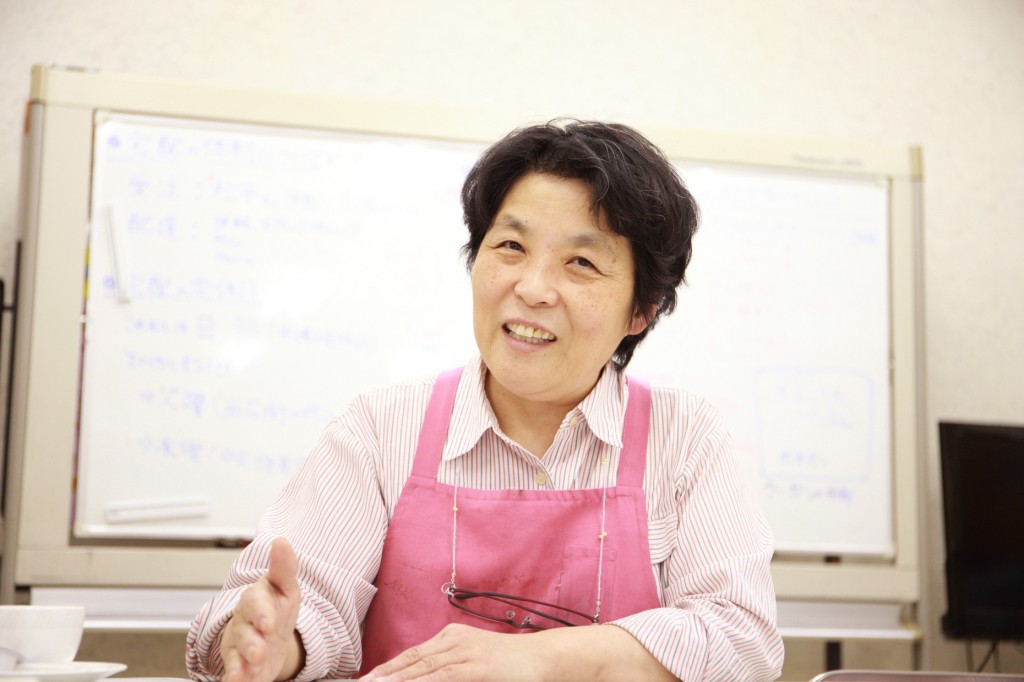
I saw a reinforced concrete building toppled over on the road I often walked down. ‘The earthquake destroyed such a large thing…’I was afraid that the entire shopping street would have collapsed, but fortunately my shop escaped severe damage. Nevertheless, I did not feel like reopening my shop.
At that time, I was scolded by my father because he could not stand watching me losing my energy, ‘Store owners must open their shops as soon as possible under such a situation where everyone is facing great difficulty!’ After that, I pulled myself together and promptly asked my acquaintance living in my neighborhood to deliver propane tanks, collected and bought the necessary cooking equipment and resumed sales of prepared foods in the following month, on February 5. For a short while after reopening my shop, however, sales were weak.
One day, I was asked by a customer, “Do you have hot cooked rice?” Until then I did not realize that disaster survivors wanted such ordinary daily items. To meet their needs, I soon put up a sign saying, “Hot cooked rice available” in front of my shop. This information immediately spread throughout my neighborhood, and my shop received a rush of orders. Shortly after resuming operation, we used two electrical rice cookers, but later increased the number to four to handle the larger number of orders. At that time we cooked one bag of rice (60 kg) a day. Those days we were very busy every day.
The principal said that if the local shopping street was not revitalized, Miyagawa Elementary School would not be revitalized either. From this comment, I strongly felt that revitalization of the local community, not to mention the shopping street, was closely linked to children’s mindsets and their living environment. Moreover, I thought that livening up my own shop, Okazu Factory, on the shopping street would result in the reconstruction of our community.
Since Nagata Ward covers a broad area, it is difficult for many people to recognize the location of the Nagata Jinja-mae Shopping Street. To let people know the location of the shopping street more specifically, in 1996 it was renamed Nagata Jinja-mae Shopping Street from the former Nagata Shopping Street. At the same time, the second name of Nagata Station on the Kobe Municipal Subway and Kobe Rapid Transit Railway was also changed to Nagata Jinja-mae, which had been requested since before the earthquake. (December 1, 1999)
In addition, the large torii (sacred red shrine gate), the landmark of the Nagata Jinja-mae Shopping Street, was renovated with its completion ceremony being held on June 28, 1996. On July 25 of the same year, the catalog merchant Gambatte-masu KOBE started up, based on the idea of Ms. Fukumi Kuroda, who is an actress and amateur photographer. In 1998 an Asian Cultural Festival was planned by the Promotion Association, with shopping street store managers playing a central role, under the concept of “Children play and have fun.” The festival was run by many local residents who served as volunteers. This was the first regional activity and a breakthrough initiative.
The greatest feature of the card service is that the accumulated points are used not only as cash but also for donations. The users of the reward card can accumulate fractional points for purchased amounts of less than 100 yen each year and can donate the cash corresponding to the accumulated points to organizations designated by individual users, such as local women’s associations, local governments, PTAs, or volunteer groups. It was wonderful that we could realize such a service that contributes to the revitalization of the local community by having local residents become involved in it.
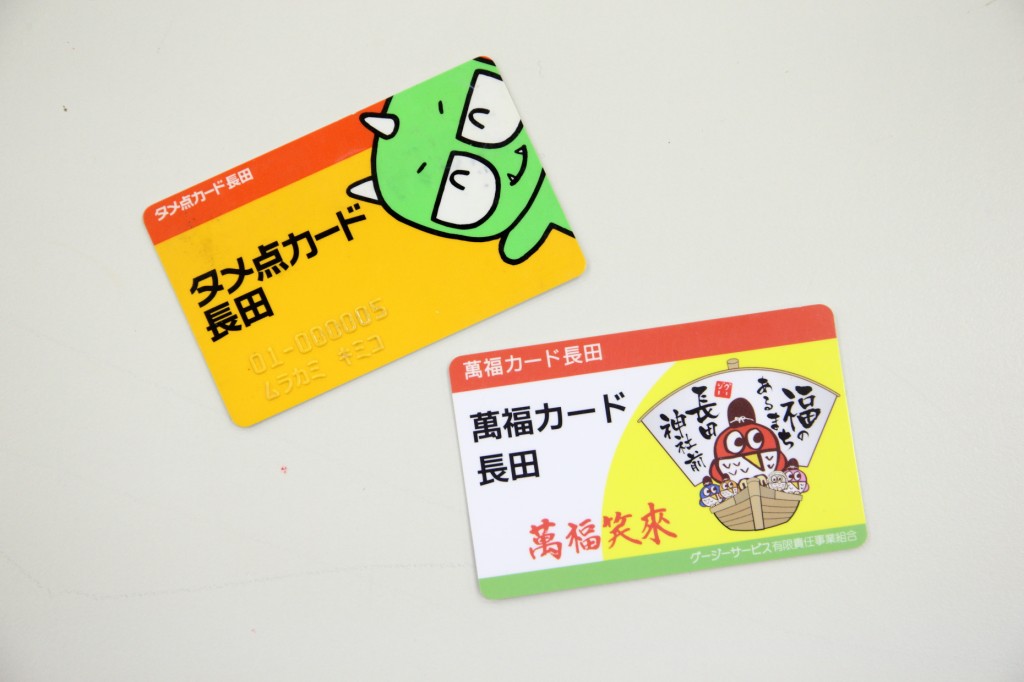 Photo:Tameten Card Nagata and Mampuku Card Nagata drew a large amount of attention
Photo:Tameten Card Nagata and Mampuku Card Nagata drew a large amount of attentionAfter this success, Nagata Jinja-mae Shopping Street had the honor of being selected as one of the Best 30 Shopping Streets Making Most Outstanding Efforts by the Ministry of Economy, Trade and Industry at the end of 2013. In the same year, the Tameten Card Nagata became Mampuku Card Nagata. The new card has a feature to support the safety and security of users in addition to the conventional functions of Tameten Card Nagata. It is expected that the card service will lead to further revitalization of our community.
“It’s a dull summer festival, isn’t it?” Hearing this casual comment from a customer who passed by my shop, I couldn’t stand still, and rushed to the Nagata Shrine. What I saw there was exactly as the customer said. There were very few food stalls and people, and the atmosphere of the festival site was languid. I felt a sense of crisis.
Soon after that I participated in a discussion to attract a larger number of customers at a weekly meeting held every Wednesday where many local residents got together. I proposed using a subsidiary system to make Nagoshi Yukata Festival a more lively and community-based event. Moreover, I set up a booth that served as an operation base for four women’s associations to facilitate their activities.
As a result of these steady efforts, the Nagoshi Yukata Festival has become a major festival attracting a large number of people with the support of volunteers from local women’s associations, PTAs, and the shopping street. I firmly believe that local residents are enthusiastically taking part in activities because they are all aiming to create “a district in which we want to live,” “a district we want to visit,” and “a district filled with luckNagata Shrine-mae Shopping Street” by enhancing the appeal of the local community.
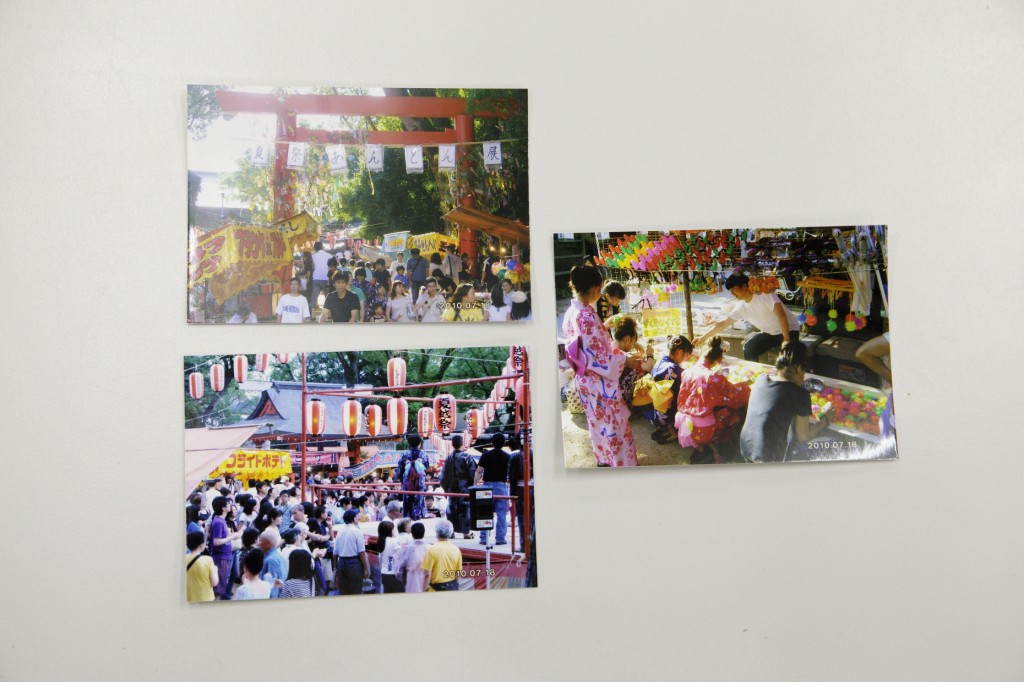 Photo:Nagoshi Festival attracts a great number of people every year
Photo:Nagoshi Festival attracts a great number of people every year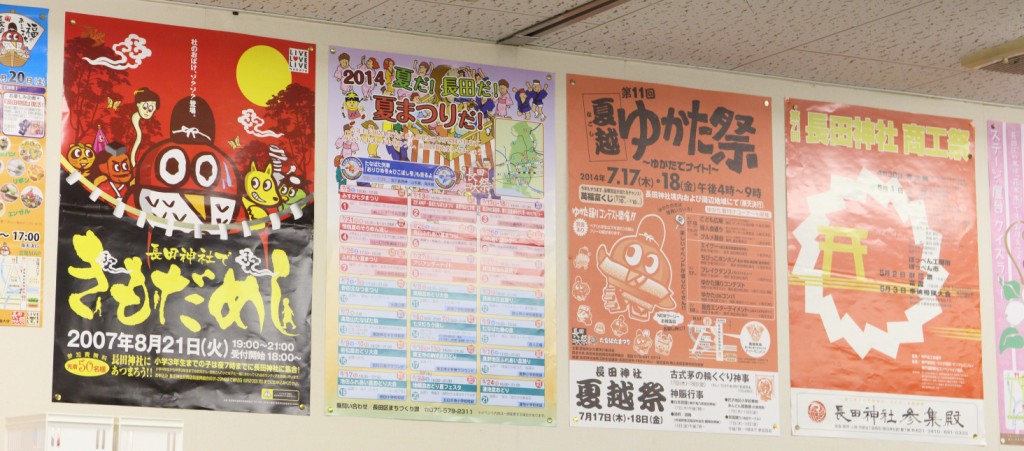 Photo:A variety of events are planned and implemented
Photo:A variety of events are planned and implementedThe home-delivery business operated by the Promotion Association has been carried out by Guji Service LLP, an organization established concurrently with the renewal of the card service conducted by the association. The home-delivery business with its aim of safety and security is favorably accepted by users as a reliable service, because it is a personalized home-delivery service operated by people that users know well. I expect this service will help eliminate the problems unique to Nagata.
The home-delivery service is combined with the catalog merchant service for local residents. We distribute catalogs to local residents including various goods and assorted prepared foods sold by stores on the shopping street and receive orders by telephone or fax. We offer free delivery for a total purchase of 2,000 yen or more. We will enhance the home-delivery business to offer even more satisfactory, safe and secure services to residents of our community.
I quit my job to help out at the fish cake shop run by my family. Immediately after I left the company, I began to be trained in fish cake-making and concurrently learned how to make vegetable tempura at my uncle’s shop. From the beginning I planned to create a shop producing and selling a variety of prepared foods in addition to those made at the shop run by my family. I put particular focus on prepared foods because I believed such foods would certainly attract lots of attention in the future.
Based on this idea, I opened my delicatessen Okazu Factory in 1989. However, shortly after opening the shop sales were low, because buying prepared foods at a delicatessen was not established in those days. It was not even recognized, so we tried to create original recipes through trial and error. Then, to get ourselves out of this situation, I invented a system under which assorted prepared foods and cooked rice are sold separately. This style was favorably accepted and appreciated by our customers.
 Photo:Assorted prepared foods sparked the popularity of Okazu Factory
Photo:Assorted prepared foods sparked the popularity of Okazu Factory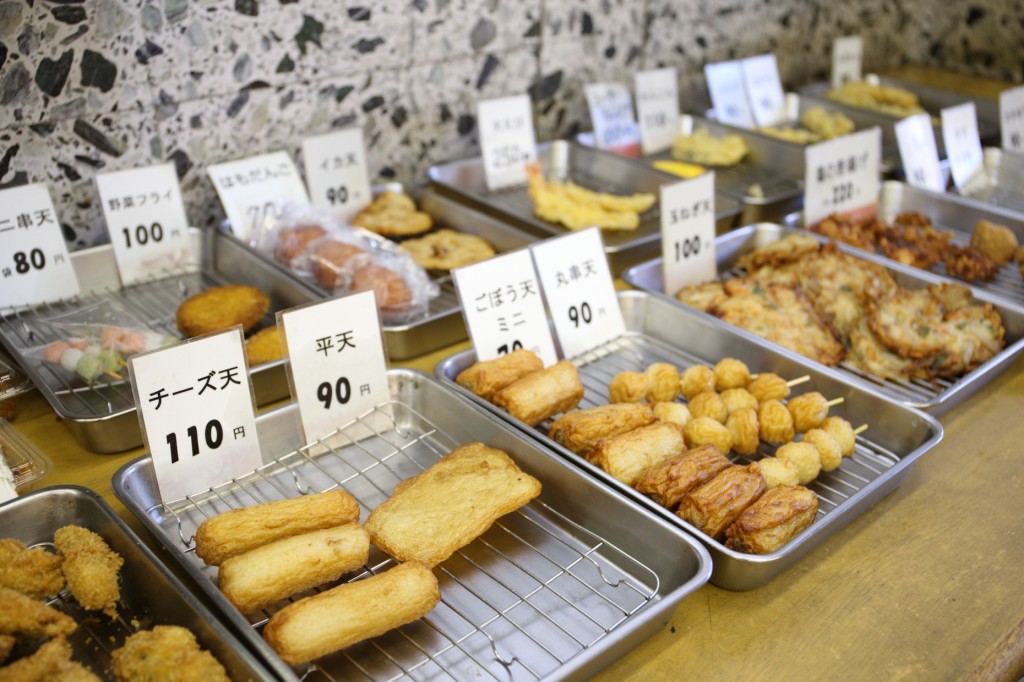 Photo:Deep-fried fish cakes, a best-selling item of her delicatessen
Photo:Deep-fried fish cakes, a best-selling item of her delicatessen Photo:In front of her delicatessen, Okazu Factory
Photo:In front of her delicatessen, Okazu FactoryKimiko Murakami
Ms. Kimiko Murakami is the owner of Okazu Factory, a delicatessen located on the Nagata Jinja-mae Shopping Street. She also proactively plans and implements events and services to help revitalize the local community as Head of the Regional Revitalization Division, Nagata Jinja-mae Shopping Street Promotion Association.